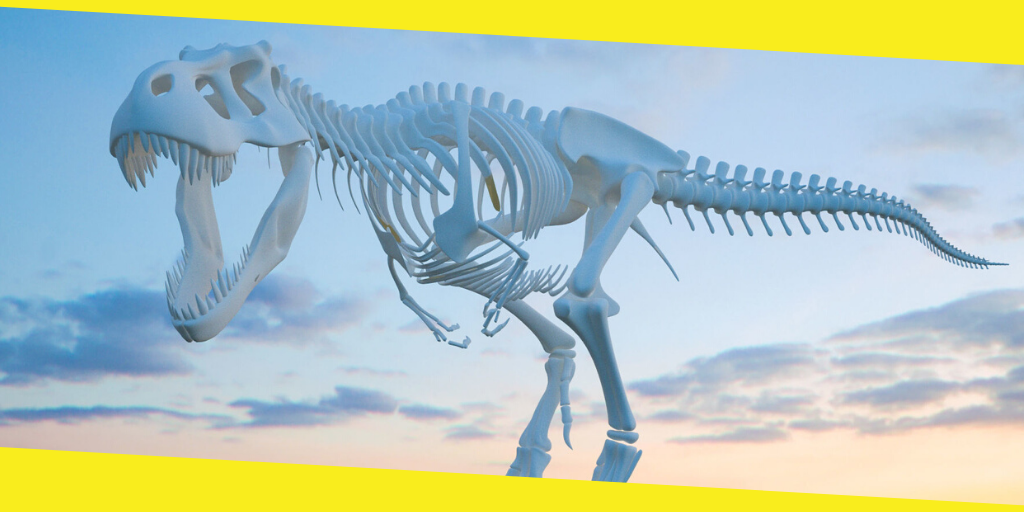There Are Four Classifications of Dinosaur Skeletons

Dinosaurs belong to a very diverse group of reptiles. They belong to the clade Dinosauria and are believed to have first appeared between 243 and 233.23 million years ago in the Triassic period. The accurate origin and timing of evolution of that Lifesize animatronic animal is still a subject of active research. Based on their skeletons, dinosaurs are classified into four types.
-
Contents
ToggleTRICERATOPS
Taxonomic details:
- Taxonomy: Dinosauria, Ornithischia, Genasauria, Cerapoda, Marginocephalia, Ceratopsia, Neoceratopsia, Carnosauria, Ceratopsidae, Chasmosaurinae
- Named by: Marsh (1889)
- Type species: horridus
Triceratops falls under the “ceratopsian” type of dinosaur. Triceratops is herbivores with a length and weight of 9.0 m and 5500 kg respectively. The distinguishing features include a horny beak and shearing teeth. With its 3 horns, a parrot-like beak and a large frill that can reach approximately 1 m across, this dinosaur has one of the largest and most striking skulls among any land animal. It moved on 4 legs and survived basically on tough palm fronds. It lived in the Late Cretaceous period, 68-66 million years ago and was found in the USA.
The fossils collected tell a lot about their lives. Like, a partial Triceratops fossil collected in 1997 has bitten off horn and the bite marks match with that of Tyrannosaurus. This gives instinct that the Triceratops’ horns could have been used to defend attacks from Tyrannosaurus. These fossils also show that the horn healed after being bitten, giving proof that Triceratops survived encounters with Tyrannosaurus. The Triceratops frill is believed to have helped them to protect their neck or help them to attract mates by recognizing members of the same species. Usually, fossils of the Triceratops have been found individually, which suggests that they did not live in herds and instead mostly spent their lives alone.
-
STEGOSAURUS
Taxonomic details:
- Taxonomy: Dinosauria, Ornithischia, Genasauria, Thyreophora, Stegosauria, Stegosauridae, Stegosauridae
- Named by: Marsh (1877)
- Type species: armatus
Stegosaurus fall under the “armoured” type of dinosaur. Stegosaurus is herbivores with a length of 9.0 m. Stegosaurus is believed to be a large, slow moving plant-eater. One of the distinguishing features of the Stegosaurus is its spiked tail. Its this powerful spiked tail would have helped him defend itself from other predators like Allosaurus and Ceratosaurus. It lived in the Late Cretaceous period, 68-66 million years ago and was found in the USA. The most complete skeleton of Stegosaurus ever found went on display in the Museum’s Earth Hall in December 2014.
Another distinguishing feature is the bony plates along its back. Most of the fossil remains of this dinosaur are found as the plates separated from the body which signify that the plates were embedded in the skin of the animal and not attached to its skeleton. It is not known exactly, but the plates would have been used for warning off predators or recognising members from the same species or regulate body temperature. When compared with the rest of the body, Stegosaurus had a very small head and its brain was the size of a plum.
Identification of Stegosaurus as a member of the species Stegosaurus stenops has led to advancement in research related to the lives and behaviour of Stegosaurus.
-
PROTOCERATOPS
Taxonomic details:
- Taxonomy: Dinosauria, Ornithischia, Genasauria, Cerapoda, Marginocephalia, Ceratopsia, Neoceratopsia, Carnosauria
- Named by: Granger and Gregory (1923)
- Type species: andrewsi
Protoceratops fall under the “ceratopsian” type of dinosaur. Protoceratops is herbivores with a length and weight of 1.8 m and 400 kg respectively. The distinguishing features include a shearing and grinding teeth with a horny beak at the front. It moved on 4 legs and survived basically on plant material. It lived in the Late Cretaceous period, 74-70 million years ago and was found in China, Mongolia.
Protoceratops had a large neck frill, which may have served to protect the neck, to anchor jaw muscles, to impress other members of the species or combinations of these functions. Unlike later ceratopsians, it lacked well-developed horns. Protoceratops was a mere flyspeck compared to multi-ton horned, frilled dinosaurs of the later Cretaceous period, like Triceratops and Styracosaurus. One Protoceratops specimen was fossilised while being attacked by Velociraptor.
-
TYRANNOSAURUS REX
Taxonomic details:
- Taxonomy: Dinosauria, Saurischia, Theropoda, Neotheropoda, Tetanurae, Avetheropoda, Coelurosauria, Tyrannoraptora, Tyrannosauroidea, Tyrannosauridae, Tyrannosauridae
- Named by: Osborn (1905)
- Type species: rex
Tyrannosaurus Rex falls under the “large theropod” type of dinosaur. Tyrannosaurus Rex is carnivores with a length and weight of 12.0 m and 7000 kg respectively. Tyrannosaurus is reputed as one of the most fearsome animals of all time. It moved on 2 legs and survived basically on other animals. It lived in the Late Cretaceous period, 68-66 million years ago and was found in Canada, USA.
The distinguishing features of Tyrannosaurus include its powerful jaws containing 60 saw-edged, bone-crushing, pointed teeth, each one up to 20cm (8 inches) long and its bite was around 3 times as powerful than that of a lion. Research has shown bite marks on Triceratops and Edmontosaurus fossil bones which show that Tyrannosaurus could crunch through bone. This is even proved by the analysis of fossilised Tyrannosaurus dung which shows the presence of bones of its prey.
Recommended For You
Scott Hughes – A Popular Author
Most Inside
Most Inside offers high-quality recommendations and valuable updates to enhance all aspects of your life, providing premium guidance and enriching experiences.




